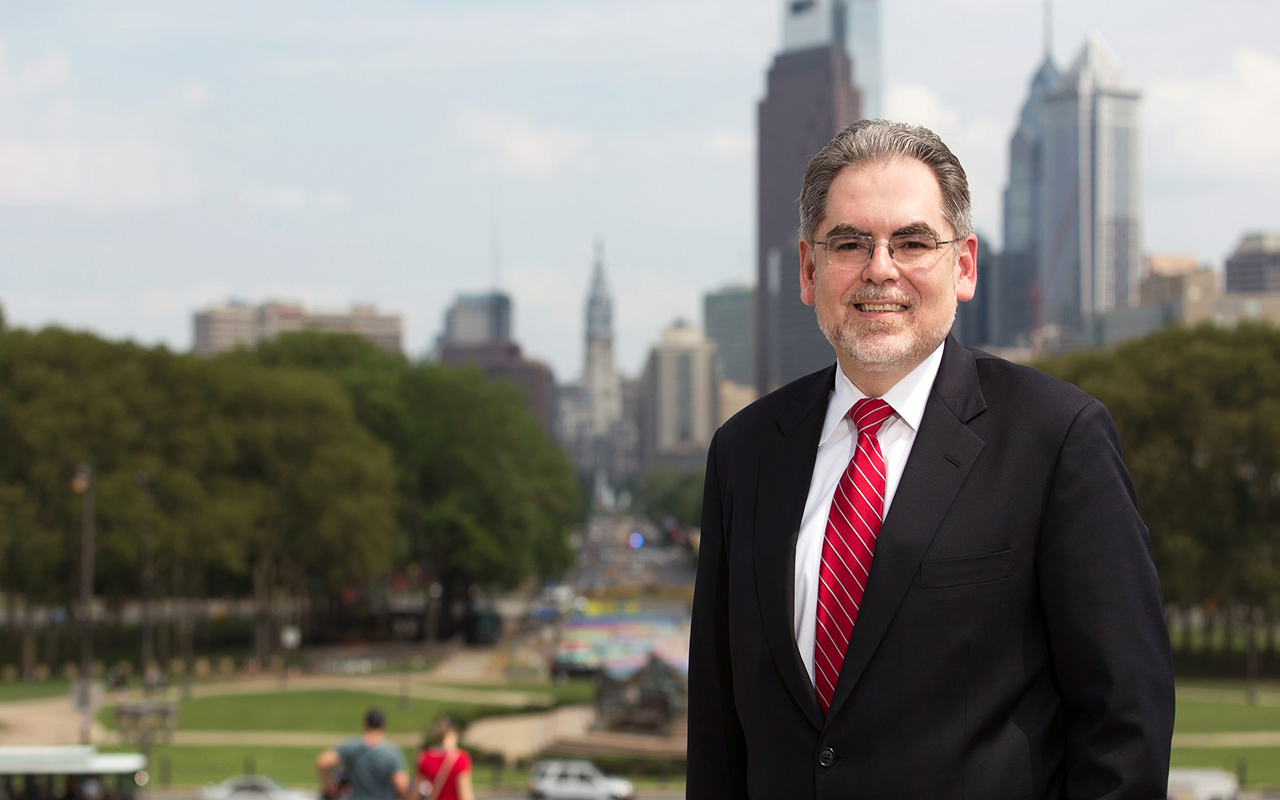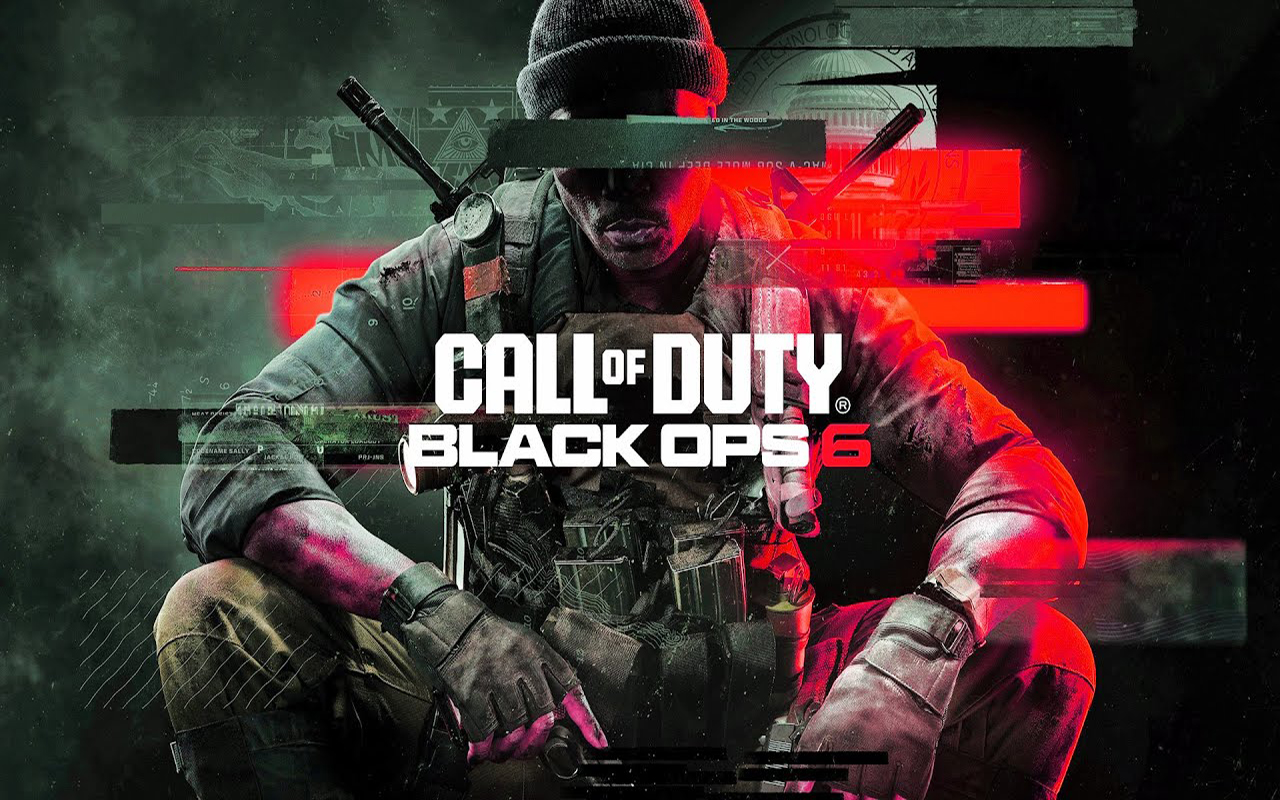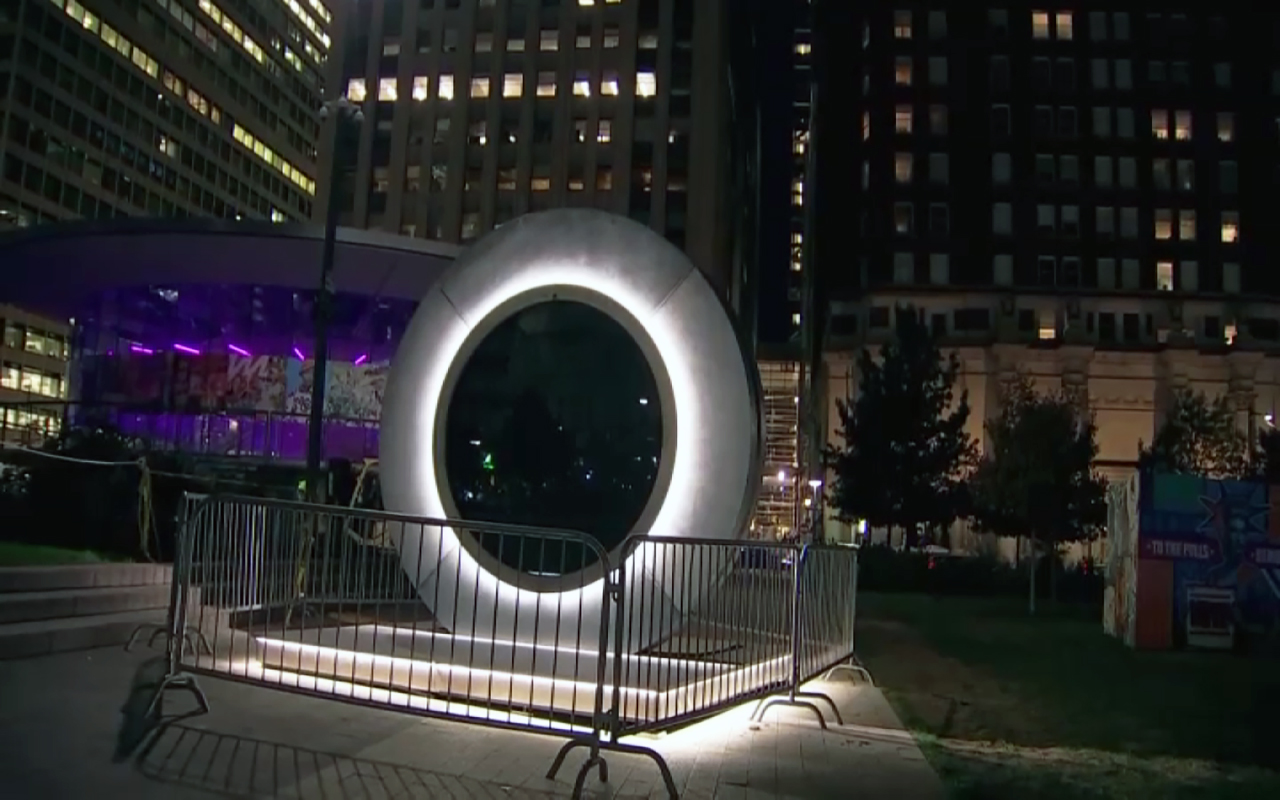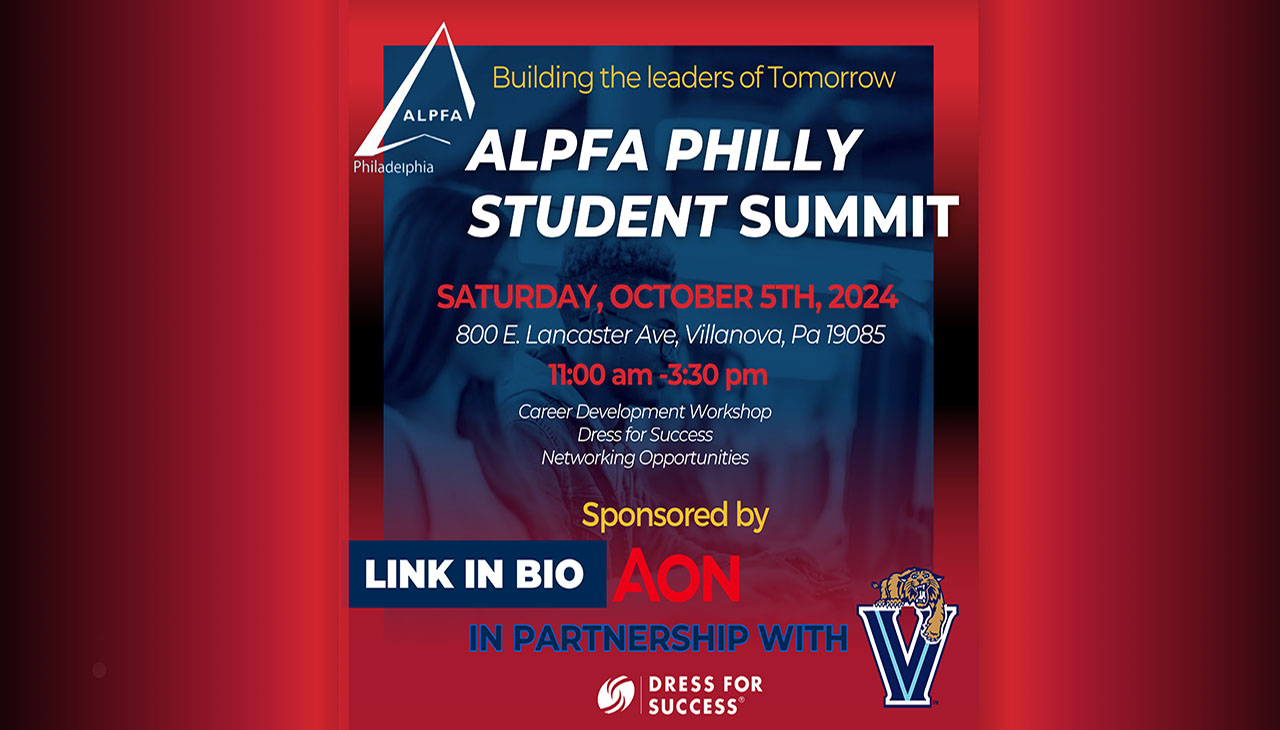
Racial tensions run deep in Whitman neighborhood
Ron Williams spent the better part of the 1990s contending with police visits, L&I orders, and angry neighbors in the Whitman neighborhood.
On Oct. 6, 1994, Ron Williams was taking some trash bags to the curb at his new residence in South Philadelphia when the rumor mill began.
A Black activist for veterans, homeless, and at-risk youth in a white residential neighborhood? Williams was prepared for some resistance.
But he didn’t think he would barred from his property at 2453-55 S. Phillip Street (a.k.a. 205 Porter Street, or the Porter Street Property). Nor was he expecting an angry mob with baseball bats, 25 unwarranted visits from 4th District police officers, and three cease-and-desist orders from the Department of Licenses and Inspections (L&I) in an apparent attempt to keep him out of the community.
Nor did Williams think, 20 years later, he’d still be talking about “cease-gate.” But with the alleged “white lives matter” protest in the Whitman neighborhood last week, he felt the story had relevance again.
‘Cease-gate’ begins
In September, 1994, Dr. Ronald Cadario donated the former Torath Israel Synagogue building, located on Porter and Phillips Streets in the Whitman neighborhood, to the Community Education and Development Corporation (CEDC), a small nonprofit Williams had started to provide trade skills training to unemployed men.
Six days after Williams made settlement on the property, he received the first cease-and-desist order from L&I.
Williams and a volunteer, Ron Watson, who was also African American, were clearing bags of debris and junk from the building when they were visited by members of the neighborhood organization Whitman Council. Williams recalls giving them a tour of the building — the largest on the block, but also in shell condition from lack of use, with neither gas nor running water. He told Whitman Council of his plans to move in, but that one day he hoped to use it as a community center for CEDC. He offered to collaborate with Whitman neighbors to use the space.
Williams left and returned later to find his volunteer gone, and bodies in the streets.
Dozens of neighborhood residents were waiting outside his place, some of them carrying baseball bats. Williams had to prove to a police officer and the agitated resident mob that he was, in fact, the building’s rightful owner, and that he wasn’t doing anything but “securing his property.” But in the end, he was still forced off the premises by L&I’s mandate to cease operating a “learning center” or “homeless shelter” without a permit.
Even today, city records show that CEDC’s Porter Street property is zoned for residential uses only as a single-family dwelling. But Williams did not legally need a permit to remove debris and do basic repairs on a property in which he intended to live. How could L&I bar him from his property based solely on the allegations of neighbors? After all, he had never operated a homeless shelter in his life.
Williams, now 69, grew up between in South and West Philly. He ran cross country and track at West Philadelphia High School, then went to Penn State through the ROTC program. In 1965, he enlisted for the Vietnam War, became a platoon leader, executive officer, and then finally a company commander. His service earned him a bronze star.
He worked for Bell Telephone Company installing phones for 20 years after his return to Philadelphia. He was lucky to have found work, he says. And as such, the growing unemployment he saw around him, both with the youth and the returning veterans, didn’t sit right with him. In the war, he had led a crew of 154 soldiers in the foxholes of Vietnam, and lost only one man; surely, he could shepherd some idle men on the streets. So he started CEDC.
Dr. Codario, who had donated the Porter Street property and also lived in the Whitman neighborhood, had met Williams at a free clinic for homeless veterans. Codario was a lead researcher in a class-action lawsuit against U.S. Agent Orange, the herbicidal chemical used by the U.S. military during the Vietnam War, and is today recognized as one of the leading experts on Agent Orange’s long-lasting toxic effects on Vietnam soldiers.
The Porter Street property was a gift from Codario that meant to keep on giving. After 18 years of paying rent for a space to house volunteers and tools, the CECD had a place to call home for its low-budget operation.
Both then and today, Williams says the organization’s space has never housed anyone but himself and his volunteers, who come from all over the world. It’s an operation one could legally operate even out of a single-family zoned home. Nearly all of CEDC’s actual work — teaching basic labor skills on run-down homes — occurs in off-site locations.
None of that mattered to the Whitman neighbors, though.
One time they responded to a call about “a burglar on the premises.” L&I cited him with violations, like the roof-deck banister leaning out, but Williams couldn’t legally enter his property to make repairs.
It took action from Williams' attorney before L&I would lift the first cease and desist order, allowing Williams to enter his property and perform "cosmetic" tasks for which no permit is needed.
‘Nothing more than harassment’
Between 1994 and 1996, Williams counted 25 visits from 4th District police officers to his Porter Street property.
L&I issued the second cease operations order in April, 1995. Williams had it lifted again, and continued fixing his property and contending with police visits. In July, 1996, without any legal order, police officers disrupted CEDC’s building dedication ceremony that was attended by a multicultural group of 30 people, including the building donor Dr. Codario's family. Without giving a reason, an officer remained on scene to monitor the CEDC ceremony throughout the day.
“I can’t understand how these people had the right to block him,” Vivec Anonthon, who was present at the ceremony 18 years ago, recalled.
It wasn’t a surprise, though. Whitman had a past of racially charged actions.
In the 1970s, 120 units of public housing now known as Whitman Park were proposed in the neighborhood, and met with extreme resistance. The project was abandoned, and picked back up around 1980. Neighbors picketed. Whitman Council got involved. Racial tensions fanned embers across the city. Some residents even put their bodies in front of the project’s bulldozers and got arrested.
Knowing this, Williams entered into an “atmosphere of documentation.”
“I had it timed,” he said, sitting in the cozy living room of the Porter Street property, which he still owns today. “I knew if I came in at 8 a.m., I would have enough time to get the mail, use the bathroom, see if anything was wrong, and be out of here in five minutes. I could have a five minute stint. If I was over to the sixth minute, the cops would be here.”
Two days after his dedication ceremony was interrupted, the third cease operations order was delivered to Williams property, and Williams had it removed.
Enough was enough.
Williams had accrued enough evidence to file a formal complaint against the City of Philadelphia, the 4th District Police Department, and the Department of Licenses and Inspections for their alleged discriminatory practice.
In the meantime, conflict continued. In September 1996, student volunteers from the University of Pennsylvania were helping Williams paint and spackle the property when the police came and forced them to vacate the property for two hours.
“It was quickly apparent to all parties involved that the incident was nothing more than harassment,” a UPenn program coordinator wrote in a notarized report later on, co-signed by the student witnesses. “In two hours, the police couldn’t produce a cease of operations order, nor could they substantiate that our efforts were in any way a city ordinance or zoning violation.”
In March, 1997, a different group of students from the University of Wisconsin came to Philadelphia to help CEDC for an “Alternative Spring Break” program, at which time they witnessed a similar incident. Police entered the home and accused Williams of “renting space” to his guests. The harassment was so troubling that a student on the trip, Sandeep Menon, wrote a letter to then Mayor Ed Rendell describing the events, adding that his image of the city was tainted by the experience.
These are but a few of the incidents that occurred over the years. Williams himself wrote letters to Mayor Michael Nutter when he was a councilman, who looked into the matter. He made a plea to Congressman Chaka Fattah, and even to Tipper Gore, an advocate for homeless issues during her husband’s time in the Vice President’s office. He even appealed news outlets from the Philadelphia Inquirer to the Baltimore Sun, but Williams said he “couldn’t get an editor to breathe on the story.”
So how did the Whitman neighbors wield the power over the police and L&I?
At its core, Williams’ story isn’t that unusual. Thousands of complaints are made to L&I every week. According to a source familiar with zoning practices in the city, residents sometimes use zoning code as a “proxy” to control what’s happening in their neighborhoods. If you don’t like your neighbor, find something out-of-code with their property and report it to L&I.
One explanation, Williams says, is Margaret “Peg” Sullivan, a former aide to the office of then Councilman Jim Kenney. Unlike “cease-gate,” Sullivan briefly made the news for a violent offense around the same time, which resulted in charges from attempted murder to burglary.
She lived a few houses away from the Porter Street property. Williams and other witnesses recall that she coordinated with Whitman Council in their battle against Williams’ nonexistent homeless shelter, and that she was pulling her connections to L&I through her position in City Hall.
In a letter dated March 8, 1996, Whitman Council, in an apparent attempt to get Williams and CEDC off the block, offered to pay for a property appraisal at 205 Porter Street. The Keystone Appraisal Company sent Whitman Council the results, deeming the property an unlivable “shell,” and Whitman Council forwarded the memo to Williams.
There, CC’ed at the bottom was Councilman Kenney, who was appointed as a special committee person to L&I in the early 1990s.
Kenney, now the Democratic nominee for mayor, told AL DÍA that he had no personal involvement with Williams’ case. He did, however, sympathize with the story and said “it does speak to the larger need for L&I reform.”
Probable cause granted, denied
The Pennsylvania Human Relations Commission (PHRC) investigation would take seven years to complete. The final report was released to Williams in 2003, which found probable cause for his claims of discriminatory practice.
PHRC investigators confirmed that police officers from the 4th District were acting on “petitions and/or complaints from white neighbors, L&I, city officials and/or Whitman Council,” under the premise that Williams was running an “alleged homeless shelter.”
The report noted that “city officials including the mayor were advised of the matter, but deferred to L&I in dealing with Complainant’s despite their knowledge of past racial tension in the area.”
Williams waited another three years. Nothing happened. Then he received a phone call from PHRC saying his case had been overturned.
Williams says he never received formal documentation as to why probable cause was reversed. (AL DÍA’s right-to-know request to PHRC was denied). But despite evidence of race-based discrimination on part of Whitman Council and the neighbors, Williams says he was denied because he never applied for proper zoning.
Why didn’t he fight back?
The Porter Street property became like “a pariah” to him. He didn’t want to fight anymore. CEDC used the property as a storage space and occasional gathering spot for the organization’s volunteers — well within the limits of the building’s RSA-5 zoning — but for many of these intervening, Williams kept to himself.
Oddly enough, in spite of the racial tensions that flared last week in Whitman, Williams said his own community relations have improved somewhat. CEDC has even found mutual ground with some neighbors who used to be adversaries.
In the coming months, CEDC has plans to continue launch a new initiative against homelessness, and Williams plans on recruiting volunteers locally.
“I don’t think people ever fully accept you, but the communities change over time,” Williams said. “The important thing is that, even if there’s an issue, you don’t need to make it a racial thing. [Cease-gate] happened because of the element of surprise. Neighbors want to feel in control of a situation. They want to feel respected. But in the end of the day, we all have to build up a better tolerance for one another.”










LEAVE A COMMENT:
Join the discussion! Leave a comment.